

 STUART JORDAN explores this unusual design for steam locomotives.
STUART JORDAN explores this unusual design for steam locomotives.
The term ‘cab forward’ refers to when the driver’s cabin on a locomotive is located substantially further forward than is usual. Traditionally, the cab on a steam locomotive is at the rear, behind the boiler. This allows the fireman easy access to the coal in the tender and it is easy for the driver and fireman to communicate. They are also more enclosed and protected from the weather.
Throughout the development and use of the steam locomotive, different designers experimented with a cab forward design. The advantages that a cab forward design has over a rear cab is that visibility for the driver is greatly increased. As the driver compartment is in front of the boiler and chimney it will not fill up with smoke when the locomotive enters a tunnel.
The disadvantages are that the fireman is still stationed at the rear of the locomotive to access the tender. This means that communication between the two locomotive crew would be difficult. Also, with the driver at the very front of the locomotive if there were to be a head-on collision it would be very unlikely that the driver to survive.
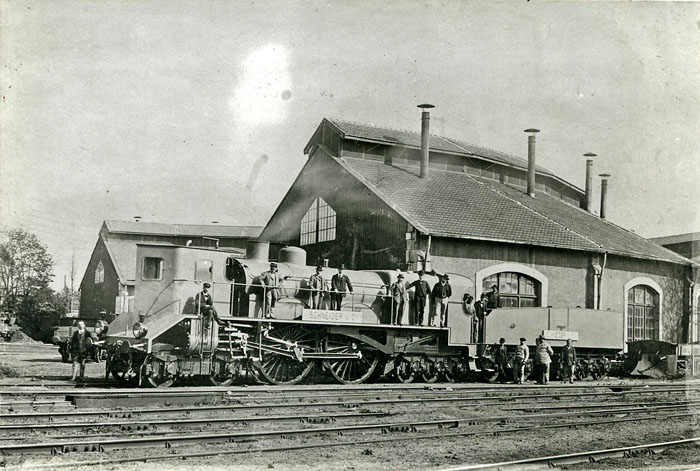
Thuile Locomotive.
One of the earliest cab forward steam locomotives was built in France in 1899 by a Monsieur Thuile. The design was built by Schneider and for all intents and purposes looked like a standard locomotive - but with a pointed cabin in front of the boiler to accommodate the driver. One fellow engineer described it in the press as ‘a hideous monster’, with its unconventional shaped boiler to allow for larger driving wheels. In tests, between Chartres and Orleans the Thuile Locomotive reached the speed of 73mph while pulling a load. The tests were tragically cut short, however. Accounts are not confirmed but is seems that during a test of the locomotive in June 1900 Thuile was killed after leaning out of the cab and striking a lineside pole. The locomotive was scrapped in 1904.
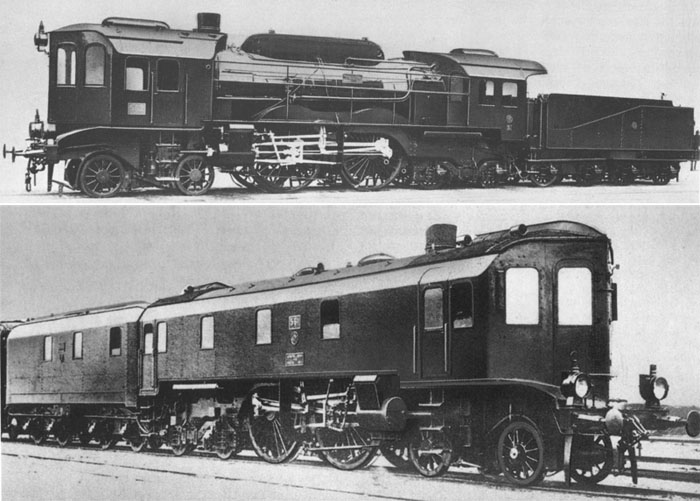
The two Altonas.
Around the same time, the Prussian State Railway was also experimenting with cab forward designs. Two locomotives, numbered Altona 561 and Altona 562, were giving the classification ‘S 9’ but were different to the 4-4-2 express locomotives which made up most of the class. 561 was built with streamlining with a streamlined tender. The locomotives were built in 1904 by Henschel from designs by engineers Wittfeld and Kuhn in response to a tender from the Association of German Engineers to build a locomotive that could pull a 120-ton train at 75mph. Tests with the Altonas found that they didn’t quite reach these requirements, so no more of the class was produce. The two locomotives stayed in service until 1918.
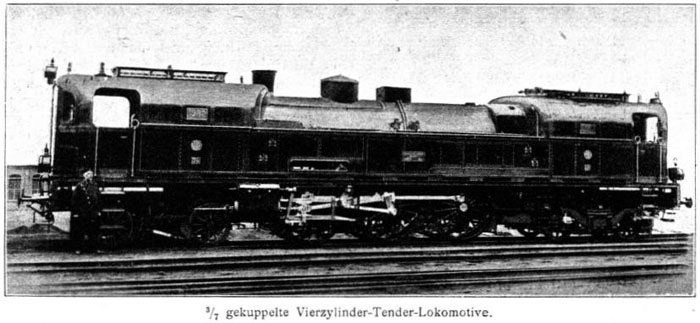
Prussian T 16.
Another unsuccessful test by the Prussian Railways was the T 16, developed to run on the steep inclines of Thuringia. This was a tank locomotive, also designed by Kuhn and built by Henschel, with a 4-6-4 wheel arrangement to ensure stable running in both directions. The T 16 had a cab at both ends and required, like the S 9, three members of staff to run. This was due to a regulation requiring the driver and fireman to be working together, so a third man would be stationed in the other cab to observe the route. The T 16 had an axle weight of over 20 tons, which meant that it was simply too heavy to run properly. This factor, coupled with the need for an extra wage, meant that the T 16 was soon sent back to Henschel for scrapping.
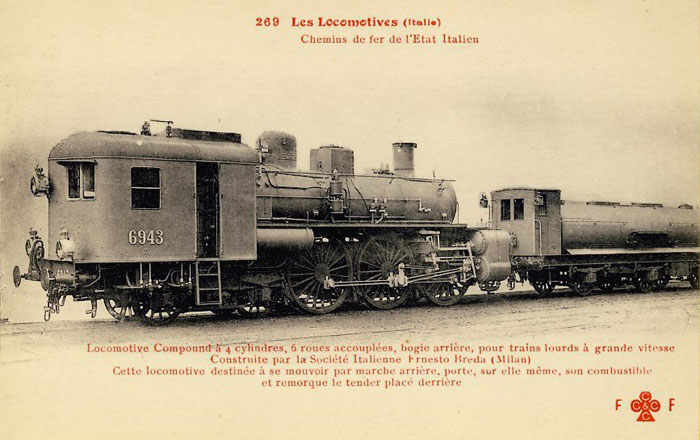
670 Mucca.
Italy was having much more success with cab forward designs than Prussia, with their efforts staying in service for much longer. The Class 670 (originally classified Class 500) was designed by Giuseppe Zara and 43 in total were built, mostly by Breda in Italy with some completed by Borsig in Germany. The design was considered unorthodox – the boiler was reversed on the frames, so it essentially looked like a steam engine running backwards with a large cab supported over the bogie. Coal was kept in a hopper on the left-hand side of the cab and above the firebox, and the locomotive pulled a tank tender filled with water. The 670 was affectionately nicknamed ‘Mucca’, which is Italian for ‘cow’ and the class spend their lifetime running on mainline railways in the Po Valley. The 670 suffered from the same problems as the Prussian efforts; with the fireman facing backwards stoking the fire, they could not easily observe the signals. Despite this issue, the class ran until the end of the 1930s before being withdrawn.
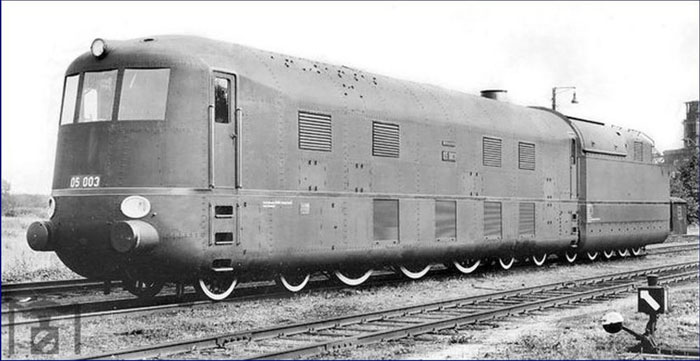
Deutsche Reichsbahn 05 003.
Travelling back to Germany, in the mid-1930s the Deutsche Reichsbahn produced a new streamlined class of locomotives for pulling express passenger services. The Class 05 was designed to be a steam-powered alternative to diesel high speed trains such as the Flying Hamburger. Only three were built and one of them held the speed record for a steam locomotive for two years before being beaten by Mallard of the LNER. 05 003 was built as a cab forward locomotive and fuelled with coal dust, which proved unsuccessful as the dust didn’t completely burn and built up as slag. After the Second World War, all three locomotives had their streamlining removed and 05 003 was converted to hard coal firing and the forward cab was removed.
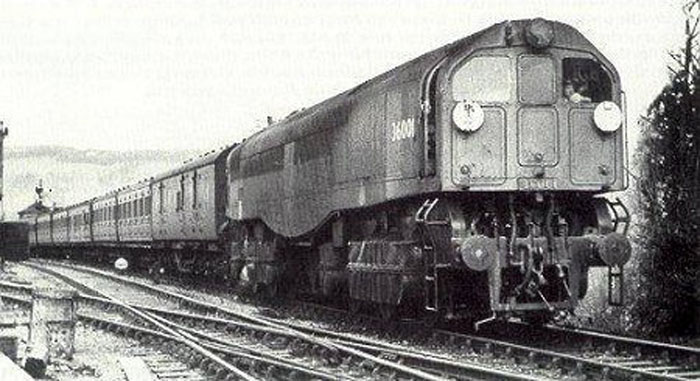
SR Leader Class.
Heading closer to home, we'll take a look at a locomotive that would have almost certainly come past the site of Gaugemaster HQ. Back then it was just Ford Station Yard, and the locomotive was the Bulleid-designed Leader Class. The Leader was supposed to eliminate the problems with running steam locomotives. It was to do this by incorporating some of the features of Southern's electric locomotives into a steam-powered design. One advantage an EMU had was that it could be run from either end, so didn't require turntables to turn round the locomotive. The Leader was designed with a cab at each end of the locomotive with a corridor between the two. This corridor included the fireman's cab in the centre of the locomotive, where he stoked the boiler. The steel casing gave the Leader the look of a modern diesel locomotive, a far cry from traditional steam locomotive design. Only one Leader was built, numbered 36001. Construction on the prototype was started in 1947 and once complete the Leader went into trials. The design was far from perfect, unfortunately. The working conditions for the driver and fireman were cramped and incredibly hot, for the latter. Fuel consumption was high, and the fire was so hot that the lining of the firebox would collapse or melt, regardless of what it was constructed of. After modifications, the locomotive became almost too heavy for the railway and may have damaged the rails. Unfortunately, despite the Leader running well at times, it was deemed a failure and in 1950 360001 and four incomplete Leaders were cut up for scrap.
There were many other cab forward steam locomotives in use, too many to describe each of them in this article. It may seem from these examples that the cab forward design was a disaster when applied to steam locomotives, with many of these engines being scrapped, but it is important to remember that Rome wasn't built in a day - innovation requires far more failures than successes to succeed.